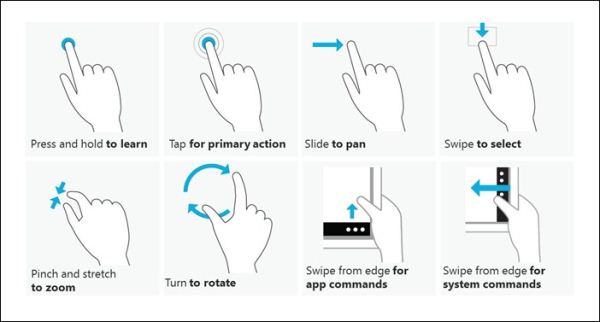Microsoft’s Jerry Koh and Jeff Piira gave some insight into the Windows 8 touch experience in yet another Building Windows 8 blog post yesterday. They talked specifically about the type of touch hardware that would be required for Windows 8-certified tablets – the touchscreens in Windows 8 and Windows on ARM tablets will need to recognize at least five simultaneous inputs, have good edge detection, and accurately register 95% of all touch input.
To ensure a decent experience on Windows 7 tablet hardware, the gestures needed for basic OS navigation require no more than two fingers, though tablets with limited multitouch capabilities may not be able to use apps or features that require more complex gestures. To compensate for tablet hardware with poor edge detection, Windows 8 can use a 20 pixel buffer around the screen to help register edge gestures, but the space used for the buffer cannot be used to register other touch input. Various sensitivity issues may also cause problems with individual taps, swipe to select, swipe and slide, and swipe from edge on Windows 7 tablets.
For more information, including specific Windows 7 tablets that Microsoft has used for internal testing, the full post is linked below.
Source: Building Windows 8 blog
from AnandTech



